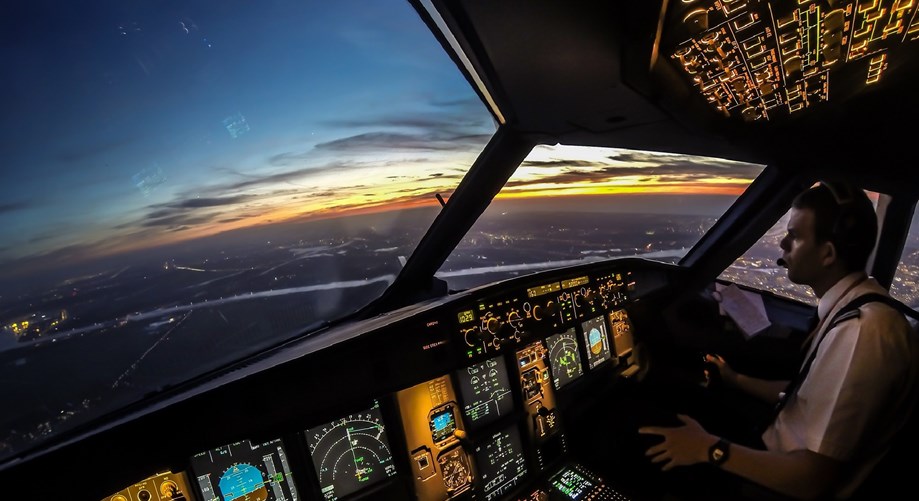How to Become a Pilot

Discover the steps to pilot training, licensure, and fulfilling your aviation dreams
How to Become a Pilot
Becoming a pilot is a dream shared by many, and it's not just about flying high in the sky; it's about turning a passion for aviation into a rewarding career. In this comprehensive guide, we will explore the ins and outs of becoming a pilot. From the qualifications required to the various types of pilot roles and the pros and cons of this career path, we'll take you through the entire journey. So, fasten your seatbelts, and let's prepare for takeoff!
What Does a Pilot Do?
A pilot is essentially the captain of an aircraft. They are responsible for ensuring the safety of everyone on board and the successful operation of the flight. This includes navigating the aircraft, communicating with air traffic control, and making crucial decisions during flight.
Qualifications Required to Become a Pilot
Educational Requirements
To become a pilot, you need a strong educational foundation. Most aspiring pilots pursue a Bachelor's degree in aviation or a related field. This education provides a deep understanding of aviation principles and safety protocols.
Licensing
One of the most critical qualifications is obtaining a pilot's license. To do this, you must undergo extensive flight training at an accredited flight school. The process involves both classroom instruction and hands-on flight experience. After completing the required flight hours, you'll need to pass a rigorous examination to earn your license.
Types of Pilot
Pilots come in various forms, each with its unique set of responsibilities and requirements. Here are the primary types of pilots:
1. Commercial Pilot
Commercial pilots are the professionals you see in the cockpit of large commercial aircraft. They are responsible for transporting passengers and cargo safely from one destination to another. Their duties include flight planning, navigation, communication with air traffic control, and managing the aircraft's systems. Commercial pilots work for airlines and are often well-compensated for their skills and experience.
2. Private Pilot
Private pilots are individuals who fly for personal reasons, such as recreation, business travel, or visiting friends and family. They cannot accept payment for their services, making private flying a hobby rather than a career. Private pilots typically operate smaller aircraft, including single-engine planes and light helicopters. While they have fewer restrictions than commercial pilots, they still need to maintain their skills and adhere to safety regulations.
3. Military Pilot
Military pilots serve in various branches of the armed forces, including the Air Force, Navy, Army, and Marine Corps. They operate a wide range of aircraft, from fighter jets to transport planes and helicopters. Military pilot training is highly selective and demanding, focusing on combat readiness and national defense. Military pilots play a crucial role in defending their country's airspace and conducting missions worldwide.
4. Cargo Pilot
Cargo pilots specialize in transporting goods and cargo rather than passengers. They work for cargo airlines or courier companies, flying freight aircraft. Cargo pilots are responsible for loading and unloading cargo, ensuring its proper stowage, and safely delivering it to its destination. This type of flying often involves overnight or long-haul flights, making it a distinct career path within aviation.
5. Helicopter Pilot
Helicopter pilots, as the name suggests, operate helicopters. They perform various roles, including aerial tours, search and rescue missions, medical evacuations, and law enforcement support. Helicopter flying requires different skills compared to fixed-wing aircraft, as helicopters can hover and land in confined spaces. Helicopter pilots are in demand for their versatility and ability to access areas that are inaccessible to other aircraft.
6. Agricultural Pilot
Agricultural pilots, also known as crop dusters, play a vital role in agriculture by applying fertilizers, pesticides, and herbicides to crops from the air. This precise and specialized work helps farmers protect and enhance their yields. Agricultural pilots need to be skilled at low-level flying and have a deep understanding of crop management practices.
7. Test Pilot
Test pilots are responsible for evaluating and testing new aircraft designs and modifications. They assess an aircraft's performance, safety, and handling characteristics, providing valuable feedback to manufacturers and engineers. Test pilots require extensive flying experience and a willingness to take calculated risks to advance aviation technology.
These are just a few of the many types of pilots in the aviation industry. Each type of pilot has its own unique challenges and rewards, making aviation a diverse and exciting field for those who are passionate about taking to the skies.
Pilot Degrees and Requirements
Choosing the Right Degree
While a Bachelor's degree in aviation is a common choice, other degrees in engineering or physics can also be suitable for aspiring pilots. The key is to have a strong foundation in mathematics, physics, and engineering principles.
Additional Requirements
In addition to formal education and flight training, pilots must meet specific health and fitness requirements. Good vision, hearing, and overall health are crucial to obtaining and maintaining a pilot's license.
How Long Does It Take to Become a Pilot?
The journey to becoming a pilot is both exhilarating and demanding, and the time it takes to achieve this goal can vary depending on several factors, including your career aspirations and the type of pilot you aim to become. Here's a breakdown of the typical timeline:
Private Pilot License (PPL)
Duration: Approximately 3 to 6 months
If you're aiming to become a private pilot for recreational purposes, the journey can be relatively short. You'll start by enrolling in a flight school and completing ground school, which includes learning about aviation regulations, navigation, and meteorology. Afterward, you'll log a minimum number of flight hours (usually around 40-60) and pass a practical flight test to obtain your Private Pilot License.
Commercial Pilot License (CPL)
Duration: About 18 to 24 months after PPL
For those aspiring to become commercial pilots, the path involves more extensive training. After acquiring your PPL, you'll continue your education by pursuing a Commercial Pilot License. This phase includes further flight training, additional flight hours (typically around 250-300 total), and advanced coursework. The entire process can take around 1.5 to 2 years.
Airline Transport Pilot License (ATPL)
Duration: Variable, often after gaining experience
To become an airline pilot and serve as the captain of a commercial airliner, you'll need an Airline Transport Pilot License. This license requires substantial experience and flight hours. Most pilots gain experience by working as commercial pilots or flight instructors, accumulating at least 1,500 flight hours as mandated by the FAA in the United States. The timeline for achieving an ATPL varies greatly depending on individual career paths and opportunities.
Military Pilot
Duration: Typically several years
For those pursuing a career as a military pilot, the journey involves joining the armed forces and undergoing rigorous training programs. Military pilot training is highly competitive and comprehensive, often lasting several years. It includes classroom instruction, flight training, and mission-specific training. The duration can vary depending on the branch of the military and the type of aircraft you'll be flying.
Specialized Pilot Careers
Duration: Varies by specialty
Some pilot careers, such as helicopter pilots, cargo pilots, or test pilots, have unique training requirements that can affect the timeline. Becoming a helicopter pilot, for example, may involve specialized training and additional flight hours compared to fixed-wing pilots. Similarly, becoming a test pilot may require advanced degrees and extensive experience in aviation.
In summary, the time it takes to become a pilot depends on your career goals and the type of pilot you want to be. While becoming a private pilot can be achieved in a matter of months, aspiring commercial or airline pilots should expect a more extended educational and training journey. Military and specialized pilot careers also have their distinct timelines. Regardless of your path, the dedication and passion for aviation are fundamental to success in this exciting field.
Pros & Cons of Becoming a Pilot
Pros:
- Adventure: Flying offers a unique sense of adventure and exploration.
- High Earnings: Commercial pilots enjoy competitive salaries.
- Travel: Pilots get to see the world and visit exciting destinations.
- Prestige: Being a pilot is seen as an esteemed profession.
Cons:
- Costly Training: Flight training can be expensive.
- Irregular Hours: Pilots often have irregular schedules.
- Stress: The responsibility of ensuring safety can be stressful.
- Health Challenges: Maintaining good health is essential.
Tips for Getting Work as a Pilot
- Network: Connect with experienced pilots and aviation professionals.
- Build Experience: Gain as much flight experience as possible.
- Stay Informed: Keep up with industry news and trends.
- Apply Widely: Don't limit yourself to a specific region or airline.
- Prepare for Interviews: Be ready to showcase your skills and knowledge.
Becoming a pilot is an incredible journey that requires dedication, education, and a passion for aviation. Whether you aspire to fly commercial planes, private aircraft, or military jets, the path to becoming a pilot is challenging but immensely rewarding. So, if you've ever looked up at the sky and dreamed of soaring among the clouds, take the first step and start your flight training today.
FAQs
1. How long does it take to become a commercial pilot?
Becoming a commercial pilot typically takes several years, including education and flight training. On average, it can take around 2-4 years to earn the necessary qualifications.
2. What are the physical requirements to become a pilot?
Pilots must have good vision, hearing, and overall health. Specific requirements may vary depending on the type of pilot's license you're pursuing.
3. Are there any age restrictions for becoming a pilot?
While there is no maximum age limit to become a pilot, you must be at least 18 years old to obtain a private pilot's license in the United States.
4. Can I become a pilot if I wear glasses?
Yes, you can become a pilot if you wear glasses or contact lenses. However, there are certain vision requirements that must be met. Consult with an aviation medical examiner for details.
5. What is the average salary for commercial pilots?
The salary for commercial pilots varies depending on factors such as experience, type of aircraft, and employer. On average, commercial pilots can earn a competitive salary, often exceeding $100,000 per year for experienced pilots.
- Share This Job



Write A Comment
No Comments